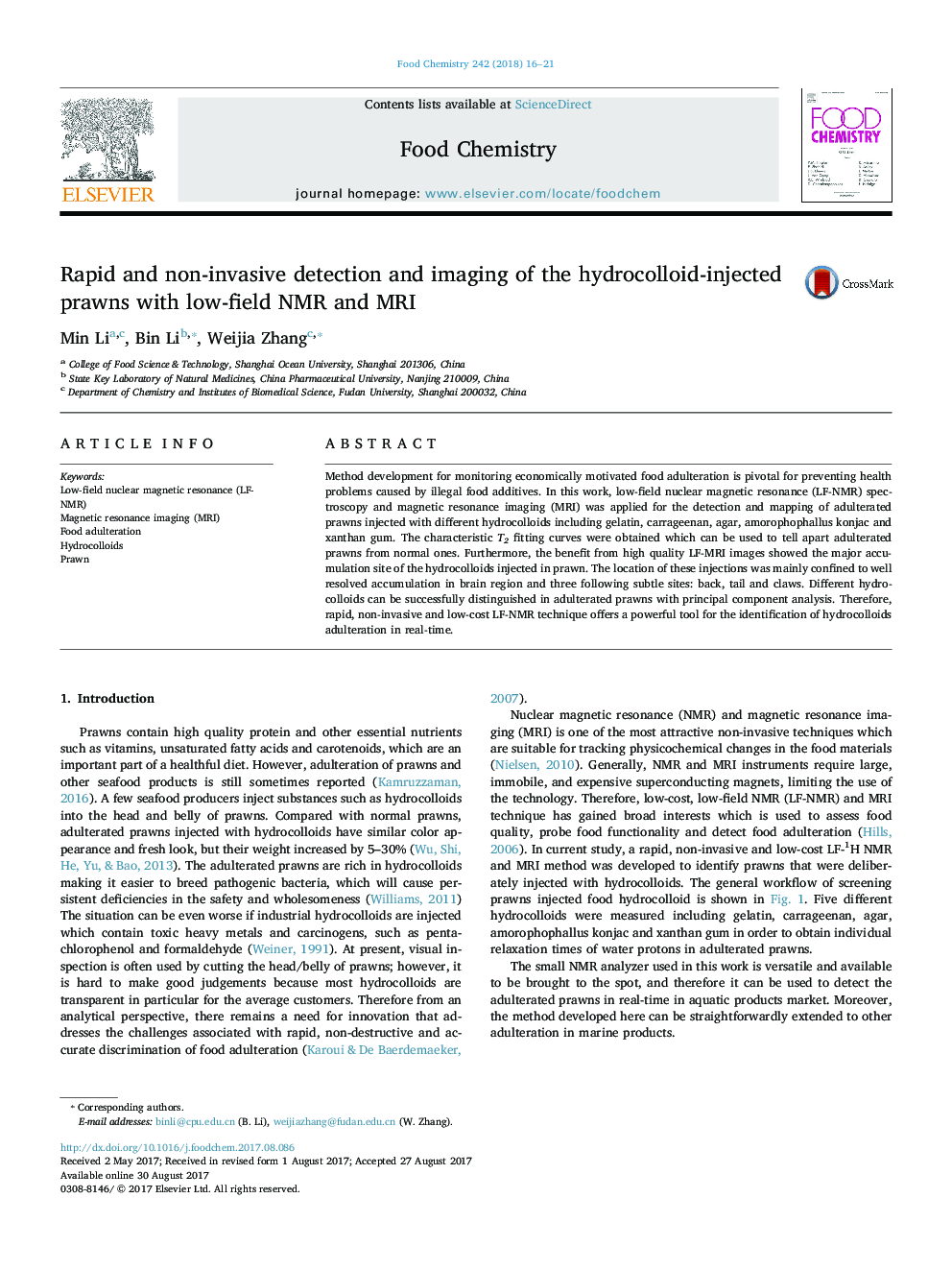| Article ID | Journal | Published Year | Pages | File Type |
|---|---|---|---|---|
| 5132577 | Food Chemistry | 2018 | 6 Pages |
â¢Low-field NMR and MRI was a rapid, non-invasive and low-cost technique.â¢Screening the hydrocolloid-injected prawns with low-field NMR was performed.â¢Accumulation sites of hydrocolloids injected into the prawns were mapped with MRI.â¢LF-NMR is a powerful technique for screening exogenous substance adulterated in food.
Method development for monitoring economically motivated food adulteration is pivotal for preventing health problems caused by illegal food additives. In this work, low-field nuclear magnetic resonance (LF-NMR) spectroscopy and magnetic resonance imaging (MRI) was applied for the detection and mapping of adulterated prawns injected with different hydrocolloids including gelatin, carrageenan, agar, amorophophallus konjac and xanthan gum. The characteristic T2 fitting curves were obtained which can be used to tell apart adulterated prawns from normal ones. Furthermore, the benefit from high quality LF-MRI images showed the major accumulation site of the hydrocolloids injected in prawn. The location of these injections was mainly confined to well resolved accumulation in brain region and three following subtle sites: back, tail and claws. Different hydrocolloids can be successfully distinguished in adulterated prawns with principal component analysis. Therefore, rapid, non-invasive and low-cost LF-NMR technique offers a powerful tool for the identification of hydrocolloids adulteration in real-time.
